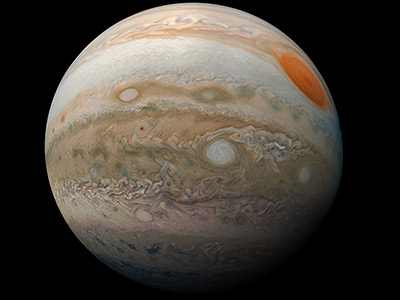By Kristin Love
As fall seemingly makes a swift exit from the southeast, winter is well on its way to grace the people of Georgia. With the chilly gusts and frigid rain comes a more positive outlook on the natural world. This season is a time for slowing down, as shown by the behaviors of our fauna friends. What better way to observe the world than through a telescope? Now is the perfect time to marvel at the night sky, with trees thinned of their leaves. Check out the following four astronomical phenomena happening in December!

M and M Night is December 7, 2022! And no, we don’t mean candy! During this evening the full moon will pass exceedingly close above Mars, hiding it (called an occultation) for parts of North America. This will produce the view of a bright yellow-orange star peeking out from beneath the moon. As the morning hours begin, Mars will reach its highest point in the sky, shining at a magnitude of –1.9, outshining even Sirius, our brightest star in the night sky.
Can’t get enough of the night sky? Join Elachee for a guided tour of the cosmos at our Seeing Stars events this month (DEC 6 for adults only, and family-friendly DEC 10) in our Starlab indoor planetarium!

The Geminids Meteor Shower is December 14, 2022. This annual event is expected on December 14. The Geminids are a reliable shower for those who watch around 2 a.m. local time from a dark-sky location. But this year, a waxing gibbous (¾ full) moon will be above the horizon during peak time for viewing. One option is to try watching in moonlight on the nights of December 13 and 14. These meteors tend to be bold, white, and quick. The brightest ones will overcome the light of the moon.

Winter Solstice is December 21, 2022. Winter Solstice is the shortest day in the northern hemisphere, calculated by the 24-hour period with the least amount of daylight hours during that day of the year. December 21 will only have 8 hours and 46 minutes of daylight between sunrise and sunset.
Dozens of cultures around the world mark this day with cultural significance. For example, Finnish folklore believes that Louhi, the “witch goddess of the North,” kidnapped the Sun and Moon and held them captive inside a mountain, causing the darkness of winter.
Join Elachee and the Northeast Georgia History Center on Saturday, December 17, 2022, for a FREE program on the history and folklore of the Winter Solstice. Pre-registration is required for the Winter Solstice Family Day.

View Jupiter during the evening December 25-31, 2022. Although 2022 is coming to a close, the passage of time is relative in the field of astronomy. While Earth takes approximately 365 days to orbit, it takes Jupiter over 12 Earth-style years to complete one orbit around the sun!
You can view Jupiter, the largest planet in our solar system, this week during the evening hours. This planet is over 2x as large as all our other planets combined! Jupiter is the 3rd brightest object in our system, usually visible with any of its 4 major moons as well (it has a total of 67 confirmed moons!).
Want to see more of our magnificent solar system up close? Join us for a Stars Over Elachee program in 2023 by reserving a telescope or by reserving a spot to bring your own telescope. An Elachee astronomer will guide your way. Visit the Elachee Calendar for upcoming 2023 dates.
